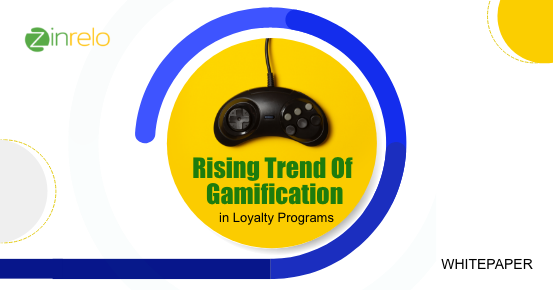Have you ever wondered why you chose that last purchase? Was it logic or instinct? I frequently think about these questions as I try to understand how consumers make decisions. Studying neuromarketing helped me understand that logic isn’t the sole driver; our unconscious mind can play a role and subtly influence our reactions to advertisements, products and brands. As the co-founder of a loyalty platform, I believe understanding this could be a game-changer for brands aiming to create compelling loyalty programs.
The Neuroscience Of Loyalty: A Brain-Centric Perspective
Our brand preferences are influenced by our brains, and loyalty can extend beyond products or services to how brands engage with different brain areas. For example:
- The Limbic System: This is the part of the brain that controls our emotions. It’s also associated with our brain’s reward system.
- The Neocortex: This is considered the “seat of our higher cognitive abilities.”
Understanding these areas is crucial for customer loyalty and crafting loyalty programs. Habit formation, a crucial aspect of customer loyalty, taps directly into our emotional and instinctual responses. If a company’s rewards program effectively stimulates the brain’s reward system, it could foster habit-forming loyalty among customers.
Appealing to customers’ emotions can also help enhance trust and loyalty. For example, Apple’s product launches are not just about the products; the company also fosters an emotional bond and a sense of belonging within the Apple community to resonate with users.
I’ve observed modern brands are increasingly employing neuroscience-based strategies to transform occasional purchases into habitual behaviors and reinforce brand loyalty. Lululemon, for example, is studying neurological reactions to different environments and how various movements interact with fabrics to enhance the customer experience.
Emotionally Resonant Branding: Beyond Transactions
From my perspective, Tesla and Chanel stand out in creating deep emotional bonds with their customers. I believe Tesla exemplifies emotionally resonant branding by fostering a deep connection through innovation, sustainability and technology. This emotional resonance distinguishes Tesla in the automotive industry and helps drive customer loyalty. Similarly, Chanel has established a deep bond with its customers by embodying sophistication and style, thus transcending transactional relationships to foster deep, identity-driven emotional loyalty.
The Dual Nature Of Customer Rewards
In building loyalty, I’ve found brands often use two types of rewards:
- Redemption rewards: These are tangible incentives like points, discounts, exclusive access, etc., and can be a very powerful motivator. For example, I am a platinum member of an airline, and, sometimes, I go out of my way to fly with that company to maintain my status.
- Recognition rewards: These are not tangible rewards but can still help drive brand loyalty and engagement. For example, Strava, a fitness app, creates monthly challenges that allow you to earn badges. Recognition can create positive emotional connections.
Both reward mechanisms can be highly successful in driving desired user behaviors. The right strategy depends on the business’s competitive landscape, brand positioning, and business objectives.
Leveraging Neuromarketing For Enhanced Loyalty Programs
Brands can consider leveraging neuromarketing insights to tailor rewards and experiences that resonate with customers on an emotional and cognitive level. This approach involves understanding the neural triggers that drive customer preferences and behaviors, thus allowing for the creation of personalized and emotionally engaging rewards. For instance, by using fMRI and EEG data, brands can decipher emotional responses to specific offers and tailor their loyalty programs accordingly.
Here are a few tactics I recommend brands consider using in their loyalty programs:
1. Emotional Engagement
Brands can use neuromarketing studies to create rewards that resonate emotionally. For example, a luxury hotel brand might offer personalized greetings or services to enhance the feeling of exclusivity and personal care. A health product company might offer points to customers walking 10,000 steps a day to show they care about their health and not just their money.
2. Behavioral Rewards
Understanding the brain’s reward system can allow brands to design loyalty programs that offer instant gratification or long-term benefits, thus encouraging repeat engagements. For instance, a retailer might offer bonus points for a limited time or for making three purchases in three months.
3. Customization and Personalization
Brands can personalize rewards to align with individual consumer preferences, increasing the perceived value and effectiveness of the loyalty program.
4. Gamification
Brands can incorporate game-like elements into loyalty programs to encourage continued engagement and enhance customer loyalty. For example, a business can allow customers to spin a wheel for visiting their store once a month to get more traffic, or they can hide QR codes on their site or social media as easter eggs. Finding these QR codes can earn bonus points.
Rising Trend Of Gamification in Loyalty Programs
In this comprehensive whitepaper, dive into the trend of gamification in loyalty programs, where innovative tactics and strategies are redefining customer engagement and retention, and how businesses are leveraging gamification to enhance brand loyalty and boost revenue.

Balancing Privacy And Personalization
However, while leveraging these tactics, brands should balance personalized experiences with privacy. Ensure you provide transparency on data usage and give customers control over their data to maintain trust and ethical standards.
Using Neuroscience For Future Loyalty Program Success
In my previous article, I highlighted the significance of Voice of Customer Analysis in enhancing customer loyalty. I believe neuromarketing is equally vital for developing effective loyalty programs that truly connect with customers. Neuroscience can provide profound insights into human decision-making and behaviors, which can help brands create loyalty strategies that are more engaging and resonate deeply with customers.
The neuromarketing market, valued at more than $3 billion in 2023, is projected to grow at a compound annual growth rate of 8.9% between 2024 and 2032. Now might be the optimal time for brands aiming to gain a competitive edge in customer loyalty to explore neuromarketing for their loyalty programs.
This article was originally published on Forbes.com by Zinrelo’s co-founder and Forbes Business Council Member, Jai Rawat.
Ready to Build Your Loyalty Program With Zinrelo?
Learn how our holistic loyalty platform can transform your business.


